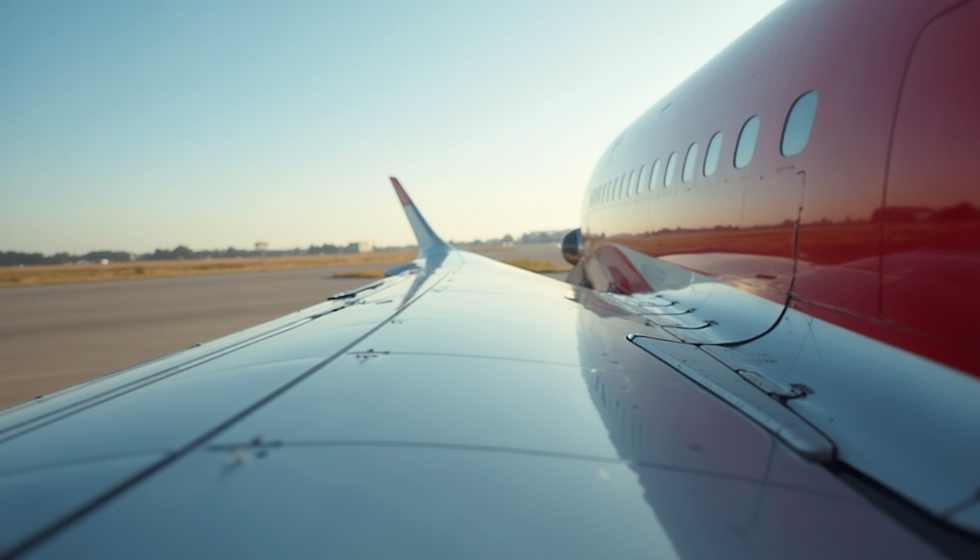A Detailed Look at Annual Inspections for General Aviation Aircraft
- Equinoxx Aviation

- Aug 8, 2024
- 3 min read
Maintaining the airworthiness of a General Aviation (GA) aircraft is paramount for ensuring safety and longevity. One crucial aspect of this maintenance is the annual aircraft inspection. Whether you’re a seasoned pilot or a new aircraft owner, understanding the ins and outs of this process is essential. In this blog, we’ll provide a comprehensive guide to annual aircraft inspections, highlighting their importance, what to expect, and a detailed maintenance checklist to keep your aircraft in top shape.
Why Annual Aircraft Inspections are Crucial
Annual inspections are mandated by the Federal Aviation Administration (FAA) to ensure the safety and reliability of GA aircraft. These inspections help identify potential issues before they become significant problems, thus preventing accidents and costly repairs. Regular inspections also help maintain the aircraft’s value and ensure compliance with legal and regulatory requirements.
What to Expect During an Annual Aircraft Inspection

An annual aircraft inspection is a thorough examination of the aircraft, covering both the airframe and the engine. It must be performed by an FAA-certified mechanic with Inspection Authorization (IA). Here’s a detailed overview of what the inspection typically involves:
1. Pre-Inspection Preparations
• Review the aircraft’s logbooks for previous maintenance records and any reported issues.
• Ensure all required documents are present and up to date.
2. Exterior Inspection
• Airframe: Inspect for any signs of corrosion, dents, or cracks. Check the condition of the skin, rivets, and structural components.
• Control Surfaces: Examine ailerons, elevators, and rudders for smooth operation and secure attachment.
• Landing Gear: Inspect tires for wear and proper inflation, check struts, brakes, and hydraulic lines for leaks or damage.
3. Interior Inspection
• Cockpit: Verify the functionality of all instruments and avionics. Ensure seat belts and harnesses are in good condition.
• Cabin: Check for any signs of wear or damage to seats, upholstery, and flooring.
4. Engine and Propeller Inspection
• Engine: Conduct a detailed examination of the engine compartment, including the firewall, mounts, hoses, and wiring. Perform a compression test and check for oil leaks.
• Propeller: Inspect for nicks, cracks, and corrosion. Ensure proper balance and secure attachment.
5. Systems Check
• Fuel System: Examine tanks, lines, and valves for leaks or blockages. Ensure proper functioning of the fuel pump and filters.
• Electrical System: Test the battery, alternator, and wiring for integrity and performance.
• Hydraulic System: Inspect the system for leaks, proper fluid levels, and functioning of hydraulic components.
6. Operational Checks
• Engine Run-Up: Perform an engine run-up to check for smooth operation, proper RPM, and functionality of the ignition system.
• Flight Controls: Verify the smooth and accurate movement of all flight controls.
Pilots Beware!
Attempting to find cheap circumventions of FAA procedures during an annual aircraft inspection poses significant risks to both safety and legality. These shortcuts often lead to substandard maintenance, something that we see often with new customers, where critical issues may be overlooked or improperly addressed.
The use of unauthorized parts, unqualified personnel, or improper procedures can result in undetected failures, increasing the likelihood of in-flight malfunctions. Moreover, non-compliance with FAA regulations can lead to severe legal repercussions, including hefty fines and the potential grounding of the aircraft. Ultimately, the pursuit of cost savings at the expense of proper maintenance jeopardizes the safety of pilots, passengers, and everyone in the vicinity of the aircraft, undermining the integrity and reliability of the aviation industry.
In Conclusion...
An annual aircraft inspection is a comprehensive and detailed process designed to ensure the safety and airworthiness of your GA aircraft. By understanding what to expect and following a thorough maintenance checklist, you can keep your aircraft in optimal condition, ensuring a safe and enjoyable flying experience. Regular inspections not only comply with FAA regulations but also provide peace of mind that your aircraft is ready for the skies.
By prioritizing these inspections, you’re investing in the safety, performance, and longevity of your GA aircraft.
If you have any questions or need professional assistance with your annual inspection, feel free to contact our expert team at Equinoxx Aviation Services.




Comments